While you will not work with a metal detector, it's hard to believe how the many and varied objects found in the ground. Below briefly list the main groups of objects that you may encounter during searches.
Coins
This is the most frequent findings. Trade in Ancient Russia used the first coins Arab East (VI-X centuries), the Byzantine and then the Tatar coins First Russian coins appeared in X-XI century, but they were few and they apparently played the role of political action, which declared Russian sovereignty. From the middle of the XII century. almost to the end of the XIV century coins disappeared from Russian markets. As money turned silver in the form of ingots.
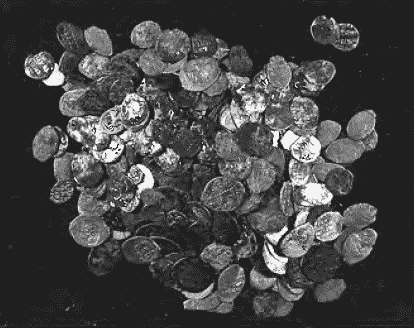
Fig. 1. Silver coins XVI-XVII centuries.
New Russian coins after beskonechnogo period began to mint in 80-ies of the XIV V. In Moscow when the Grand Prince of Moscow Dmitry Ivanovich Donskoy and Nizhny Novgorod Principality under Prince Dmitry Konstantinovich.
Since that time in Russia began to appear in circulation and drawings coins.
The most ancient coins are found in the Krasnodar region and the Crimea. Many of they are well preserved, despite the fact that more than 2000 years has been in the ground. On the beaches and parks you can find a lot of modern coins.
Crosses, coils, icons
In Ancient Russia the crosses was the obligatory attribute of every Christian. The crosses differed on the types and purpose. The most common crosses-vests. Western travelers who visited Russia in XIV-XV centuries, wrote that the Russians are constantly cross until death. So throughout Russia will not find any men and any women that don't it would be cross. Much less get crosses-encolpyon. It is collapsible double lapel crosses with movable oglivie intended for storage of relics or other sacred objects. Similar crosses were worn over the clothes people a noble family.

Fig. 2. Wearing crosses the X-XII centuries.

Fig. 2. Crucifix XVI-XVIII centuries.
It is known that farmers have long worn together with the cross on the chest of copper icons-coils, which were attributed to "power to quench the suffering" imposing them on the sore spots. Occasionally you can find metal icons which, like the encolpyon, worn over the clothes. They can be unilateral, bilateral, two - and three-folding (folding). Travelers XVII century in Russia noted that all warriors without exception certainly has on his chest a beautiful image in the form of a triple triptych, which they never leave and wherever he stopped, put it in a prominent place and worship him. There are often pagan amulets, often lunacy.
Buckles, buttons, clasps, belt details
The findings of this group of subjects are very numerous, as they are widely has been used since the bronze age to the present time. Were made usually made from bronze, copper, iron, rarely of silver and gold. Very large a variety of styles - from very simple to very sophisticated, with enamel and intricate patterns. A variety of belt buckles and plates. Some of them served only for decoration, others played a practical role of the hooks to which attached various necessary items.
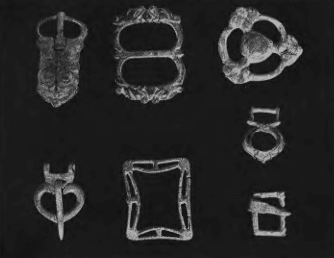
Fig. 4. Buckle X-XVII centuries.
Rare, but expensive findings include the Scandinavian fibulae (clasps), often very decorative. Simpler, Finno-Ugric, fibulas in some places occur quite frequently. Of great interest to collectors are buttons from military uniforms XVI11-XIX centuries.
Weapons, tools, household items
Weapons are most often found arrowheads, a variety of types which never ceases to amaze. Rarely found spearheads, axes, swords and daggers. Frequent finds of knives, kresal, locks, keys. Best preserved ancient bronzes (axes, knives, daggers, arrowheads, etc). Unfortunately, ironwork is often very prokontrolirovali, especially if found in fields that were once abundant was otobralis. However, individual instances, apparently had been in the flames of fire, look like new and do not require any restoration. In addition, there are large fish hooks, spoons, jewelry tools, drill, graver, stonechats, hammers, pliers, etc.

Fig. 5. Household items VII-XVII centuries (the lock, keys, knives, needles, flints with steels, etc.)
Jewelry
Jewelry is mostly associated with women, and in ancient times women just as willingly wore jewelry as it is now. Ring, brooches, pendants, bracelets, various pendants, earrings, necklaces that can be found, date from the bronze age to the present time. In the bulk they made of copper, bronze, silver and often gilded, decorated with stones, glass, enamel or granulation. There is a wide variety of styles, shapes, the manufacturing technique.
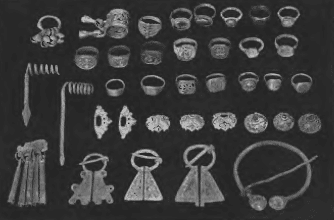
Fig. 6. Jewelry VII-XII centuries.
Occasionally there are pendants-amulets in the form of a miniature hatchets, spoons, knives, keys, various birds and animals. Diversity differ very common ornaments - bells. They were used as decorative details of the costume, but could also serve as buttons.
Elements of horse harness
This is mainly due to different size of the buckle to tighten and regulation belts harness, and bridle, stirrups and decorative moldings on horse harness. Usually they were made of bronze, but sometimes of silver with niello. Bridle, stirrups, horseshoes are forged from iron
Tokens, badges, awards
In some places the tokens were considered as informal means of payment as a means of advertising and political propaganda. Within Moscow different tokens occurs quite a lot. Occasionally you can come across the so-called official signs is a different kind of badges or charms worn on clothing during the execution the owner of official duties. Typically, the badge bore expository writing the title, for example "Senior janitor" or "Fire warden". Badges - another group of frequently occurring findings. Interest are military badges and military and athletic awards.
Native metals
To native metals are metals that occur naturally in a natural form. Despite the fact that a large number of different native metals (aluminum, lead, copper, arsenic, bismuth, Nickel, iron, tungsten, mercury, etc.), for us the most interesting gold, silver, platinum, copper and iron. The search for precious metals people started lot centuries ago. But now with the advent of metal detectors this activity is experiencing a new rise.
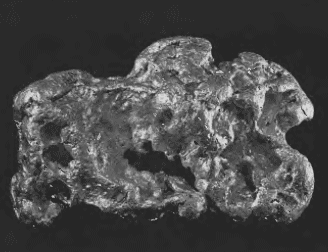
Fig. 7. A nugget of gold weighing 2670 g., found in 2006 in Australia with metal detecting
The number of new surface deposits and alluvial deposits is insignificant, but on waste sites gold is more than enough and it is quite accessible for artisanal production. Each mine usually contains the lost and unaccounted gold, content of which can reach up to 70% of the total number of gold field.
Meteorites
Sometimes you might come across a meteorite - stone, fallen from the sky Meteorites are iron, zhelezorudnye and stone. The detector responds to the first two type. In appearance to the layman it is difficult to identify a meteorite or not. So suspicious stones should show employees the Mineralogical Museum of the Russian Academy of Sciences or Institute of GEOKHI RAS.
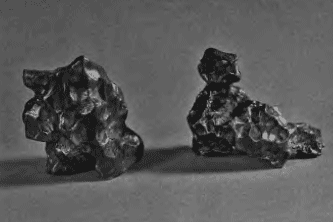
Fig. 8. Samples of the meteorite Sikhote-ASN
However, in Russia a lot of places where, having found such a stone, do not have doubt on its origin. The most interesting meteorite fell on February 12 1947 in the mountains of Sikhote-Alin in the far East. It was a lump of iron weighing about 100 tons (the size of a minivan), which exploded several times the air and fell a rain of fire on a large area (5x25 km). A large part the crash site was declared a nature reserve, but a large area where there are meteorites, is outside the reserve and their collection is not prohibited by law.
Another meteor shower fell about 20 OOO years ago in Tuva. Thanks the high Nickel content (up to 16%) of these meteorites during this time, virtually no oxidized.
More recently (2002) found meteorites on the sidelines of the Ryazan region. Using metal detectors over the summer of 2003 was collected about 1000 kg.
Individual instances are found in other places. So when searching for coins and relics should pay attention to the black or rusty stones, on which reacting the metal detector.
Enthusiasts go for meteorites on the Arabian Peninsula. There in the deserts of Oman for recent years found several hundred new and very rare meteorites, in particular from the moon and Mars. The latest price in the market is from 2000 to 10 000 USD for 1 gram.
Treasures
Very rarely accidentally lucky to stumble upon a treasure, and suddenly become rich. Others spend years and lots of money to find, but nothing.
With the advent of metal detectors treasures are increasingly. Basically this coin clade XV-XVIII centuries in those Banks the time was not yet, so the earth was considered the best place to store money and other values. It happened that the owners of the treasure was lost and never returned for their hidden wealth and remained in the land. Such treasures come across anywhere - in the field, on the banks of rivers, in the woods, cemeteries, caves and etc.

Fig. 9. Treasure coins of the seventeenth century (from the collection of B. Ershova)
Recently important on the scientific value of the treasure was found in a field near the village of Vanino The Vladimir region. The hoard contained 318 coins of the first quarter of the XV century (time the Grand Prince of Moscow Vasily the Dark). State Historical Museum acquired treasure for 5000 dollars. Many find hoards of copper half dollar coins Eighteenth century the fact that in 1796 entered banknote. It was money forced course, and very soon they were impaired. The peasants began earthing copper. Usually there are hoards from 200 to 1500 feet. Huge the treasure of dimes, containing about 30 000 coins, found near Smolensk.
Military memorabilia
In areas of intensive battles of the XX century the earth is Packed with various objects of interest to collectors. First, it is military technology - tanks, planes, cars. At the time they are stuck in the marshes, drowned at cross the river, were thrown into the impenetrable forests, etc. of a group of enthusiasts find such objects, dig out of the ground, pulled out of the water, restore and set in museums of military glory.

Fig. 10. Buttons and other objects found near Sevastopol on the ground battles 1854-1856
In addition, during the search, find weapons, ammunition, safes and staff, helmets, details of uniforms, military awards, pupils, identification tags, pencil cases etc.
When you search the battlefields cannot be underestimated. Not recommended to raise and neutralize the ammunition, pounding on them, to saw, to throw on the bonfire. You must report such findings to the nearest branch the police and wait for the arrival of the bomb squad.
Non-ferrous metals industrial production
With the collapse of the USSR and the slowdown of work at a number of mines industry experiencing an acute shortage of non-ferrous metals - copper, manganese, titanium, niobium, vanadia, chromium, lead, etc., so the prices on them have increased dramatically and their it has become profitable to look at the dumps with the help of metal detectors. So, in the territories abandoned military units are copper, lead, silver. In landfills and old unmade roads in the Urals collect ferrochrome and ferromanganese, waste stainless steel and brass.
Other
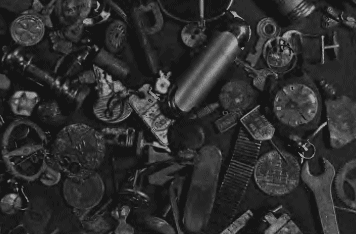
Fig. 11. Typical beach finds
You can also find wrist & pocket watch (sometimes gold), glasses, cigarette cases, lighters, locks, keys, thimbles, pillbox and snuff, pocket knives, wrenches and screwdrivers, children's toys, bullets, cartridge, printing the 1st division, whistles, bells, lead seals, tweezers, weights, fishing sinkers and hooks, irons, taps and handles from samovars, spoons, knives, forks, etc.
Along with the above items, you have to dig (especially in the first two weeks of searching) and many undesirable findings, which include nails, shells from small-bore rifles, pellets, foil from candy and cigarettes, bottle caps, pull tabs and choose cans of beer and water, pieces of wire, batteries and many other similar metal garbage.
Modern metal detectors have the discriminators to cut away like this the garbage and not to waste time and effort on his digging, however, even plucking experience some amount of garbage still have to dig. Otherwise you can miss out on valuable finds.
Author: L. V. Bulgak






